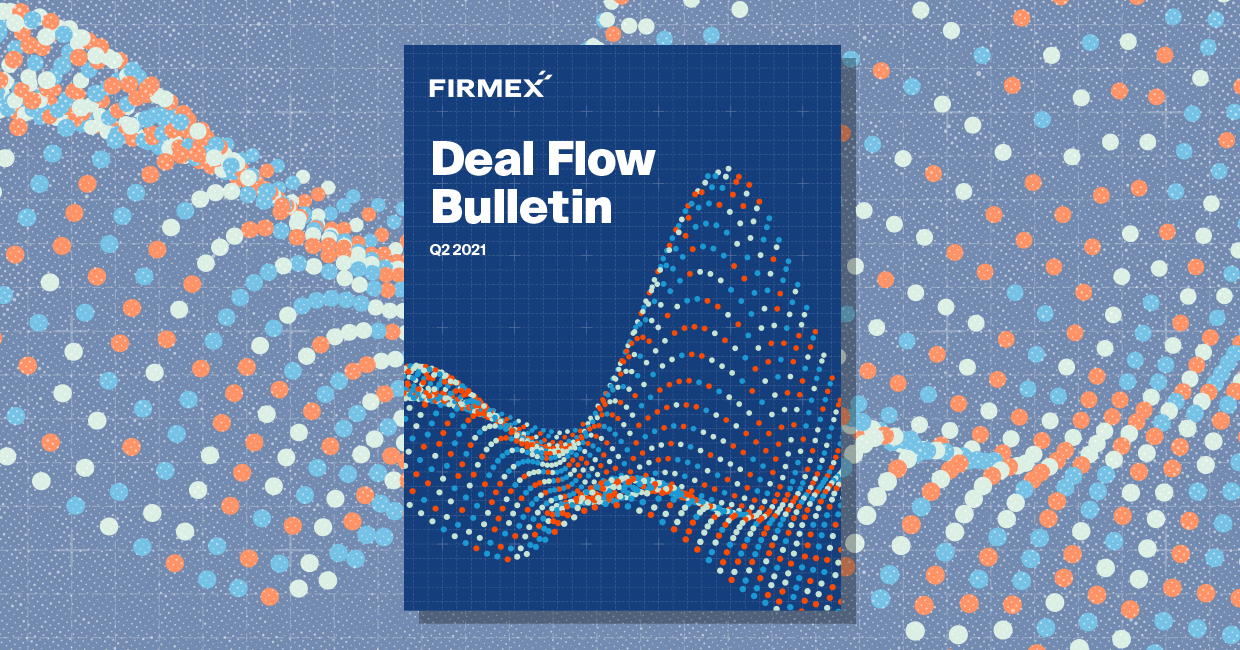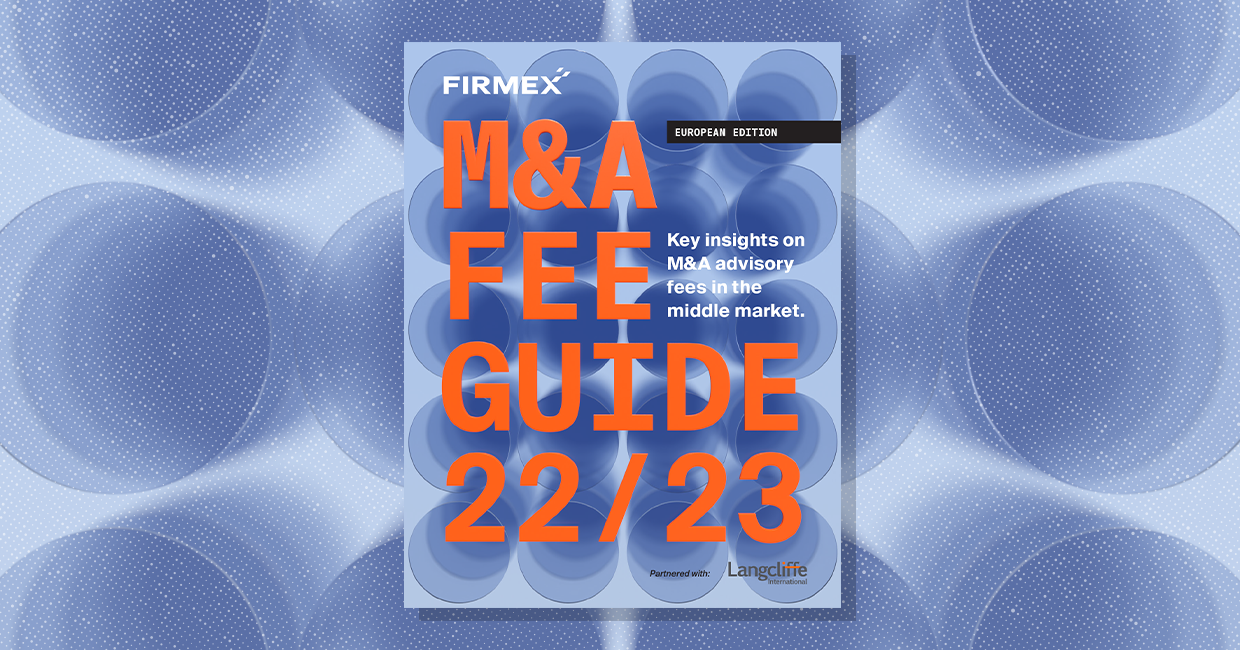Fill out the form below to download your copy instantly.
It’s impossible to talk about the year ahead without uttering the name of everyone’s favourite reality television dealmaker: Trump. A few months in, the 45th President of the United States has already proven himself to be a harbinger of change. But what that change looks like is anyone’s guess.
Uncertainty looms. Optimism surrounding the potentially pro-business Trump administration is offset by mixed-views on antitrust legislation. Add to this the aftershock of Brexit and the economic instability a divorcée Europe presents. Then weigh that against the potential return to form for the fractured energy sector and the ramping up of deals in this space. All these disparate but tightly entwined factors promise an interesting year in the dealmaking sphere.
Yet, optimism prevails.
The gamut of voices – investment bankers, business brokers, legal counsel – who shared their insight for Firmex’s forward-looking M&A Deal Optimism report, are anticipating more deals than last year despite geopolitical instability, stronger deal performance in all sectors with both Technology (Hardware), and Software Services leading the pack. In fact, the majority already report an active Q1 for 2017.
There’s no saying what the year will bring, we’re certain there’s no shortage of surprises on the horizon, but if Firmex’s 2017 M&A Deal Optimism report is any indicator, the M&A sphere is anticipating surprises of the good variety.
Overview and Methodology
Throughout December 2016, Firmex received 316 responses to the 2017 M&A Deal Optimism report. By far, dealmakers from North America were the loudest, with respondents from the U.S. accounting for 58% and Canadians making up 36%.
Of those surveyed, 60% (190 responders) said they were involved in M&A – 58% of those from the U.S. and 35% from Canada.

The driving voice came from the banking sphere, with 51% of respondents looking at the world of M&A through the lens of Investment Banking. Specifically in terms of sectors, the primary M&A environments for the Investment Bankers’ M&A action was evenly distributed with the most common sectors being Technology Hardware, Software Services, Healthcare, Pharma & Biotech, and Financial Services.
Respondents involved in Business Development made up 9%, while Owner/Executives, Lawyers, and the Other category each accounted for 8.5% of the pie. Private Equity accounted for 7% and Business Brokers, General Counsel and Accountants also weighed in, albeit, in smaller margins.

The Year Behind Us: Deal Flow & Value in 2016
After a record year for deals in 2015, last year began slowly for the dealmaking sphere before ramping up in the closing months of the year. Here’s a closer look:
How many deals does your firm tackle in a given year?
When asked how many deals their firms work on per year, the bulk of respondents (48%) reported working on one to three deals, while 24% say they worked on 4 to 6 deals and 9% said they worked on 7 to 9 deals annually. Only about a sixth (16%) of respondents said their firm handled over ten deals. This data suggests the bulk of respondents are involved in boutique investment banks.

Insight: While the prestige of working with a global bulge-bracket firm with their industry-specific teams remains, the past ten years have seen a rise in smaller players; nimble boutique firms focused on fewer deals but with less overhead and lower fees.
What was your average deal value for 2016?
Deal values were fairly evenly distributed for the year but the largest segment was deals valued at $100 million or more, accounting for nearly a quarter (23%) of the deals undertaken by respondents in 2016. The second most prominent (20%) were deals in the $20- to $50- million range followed by deals in the $10- to $20 million range at 18%. Deals in the $50- to $100- million and $5- to $10-million represented 14 of the volume while M&A exchanges worth under $5 million accounted for the fewest deals at 12%.

Insight: That deals upwards of $100 million led the pack in 2016 amongst respondents is in line with the trends. According to data from analytics firm Dealogic, the average merger or acquisition announced in 2016 was around $104.2 million, a step down from $115.4 million in 2015 but higher than the $77.1 million average between 2000 and 2014.
What was your firm’s reason for Initiating M&A in 2016?
According to survey respondents on the buy-side, three-out-of-four (76%) deals in 2016 were fueled by strategic acquisition. Of the remaining factors initiating M&A action in 2016, only one-tenth of deals were conducted on the grounds of expanding a customer base while just over 6% were geared towards acquiring IP or technology. Almost no company conducted M&A to defend against competition.

Insight: Sunoco Logistics Partners and Energy Transfer Partners $52 million merger is a prime example of the year’s predilection towards strategic acquisition. In November, Sunoco agreed to purchase Energy Transfer Partners in a $21 billion all-stock deal, assuming around $30 billion in long-term debt on Energy Transfer Partners’ balance sheets, looks to lower borrowing and operating costs.
Which exit strategy was preferred by companies in 2016?
For sell-side M&A companies, the leading exit strategy proved to be strategic buyers, operating companies providing products or services – sometimes competitors, suppliers or customers. This profile accounted for 67% of respondents. To a lesser extent, financial buyers, including private equity and venture capital firms, hedge funds, family investment offices and ultra high net worth individuals, were the second most common exit strategy, accounting for 21% of respondents.

Insight: Synergy-seeking execs and business owners favoured the stability of strategic-minded buyers in 2016 as opposed to financial-focused buyers looking for a return on their investment with a sale or an IPO. One factor that could be coming into play is the succession of aging entrepreneurs without a second layer of management. For this group, private equity investment doesn’t seem to be a viable exit option.
What hurt M&A deals most in 2016?
Several large, high-profile deals were withdrawn in 2016. Pfizer’s shelved $160-billion acquisition of Allergan sits in the record books as the largest deal failure ever. Then there was Honeywell’s $103-billion acquisition of United Technologies, bucked over (among other things) increasingly skittish antitrust regulators.

As previously mentioned, instability amongst the global economy proved to be the biggest hindrance in 2016 for the M&A sphere. Global uncertainty rivalled and ultimately surpassed the 2008 housing crisis and recession, leading to volatile markets. The uncertainty came to a head in mid-June with the United Kingdom voting via referendum to leave the European Union, throwing the markets into disarray overnight. The U.S. presidential election sent its own shockwaves rippling out to the world economy.
These sentiments were echoed in the survey with 36% of respondents pointing to Global Economic Uncertainty as a key factor affecting deal flow negatively in 2016. The U.S. Election stood out as another factor with 21% saying it hindered deals while 15% pointed to Oil Markets. Other elements, the Affordable Care Act, Antitrust Issues, the Interest Rate Environment, Brexit and OCC restrictions played a role in disrupting M&A action.
The Road Ahead: Optimism in 2017
On the whole, the ingredients for an active 2017 are there. Liquidity-wise, S&P 500 businesses hoarded more than $1.5 trillion in cash in the third quarter of 2016, a 7.6% year-over-year increase, according to financial research firm FactSet. And when you combine that with President Trump’s tax amnesty plan, there’s no surprise a lot of that optimism for M&A action is pointed at the U.S. Cobble in the assumption that China keeps control of its economic slowdown and the Eurozone builds on its economic recovery, investor confidence could drive the markets up, marking an injection of capital for M&A dealings.
Do you anticipate an active mandate in the first quarter of 2017?
Keeping in mind the survey was conducted in December, optimism amongst dealmakers is best exhibited by the sheer volume of respondents already planning on an active mandate for 2017. According to the survey, two-thirds (66%) said they’ll have an active deal in the first quarter of 2017 while 28% remained tight-lipped, saying they were “unsure.” A further 6.3% said they will not have an active deal in Q1 2017.

How many deals do you anticipate being involved with in 2017?
In step with dealmakers’ active mandates, 4 in 10 respondents (42%) expect to be involved in 1 to 3 deals, while a quarter of respondents (28%) expect somewhere in the realm of 4 to 6 deals. A major contrast point was the considerable volume of respondents (20%) anticipating more than 10 deals, as well as 9% who put that number between 7 to 9 deals for 2017.

What factors do you feel will hurt M&A deals most in 2017?
There’s no question that Q1 2017 has been predictably unpredictable as the dust settles from the last half of 2016.
To be fair, some of the blanks are being filled in: in the first month in office, the Trump administration has appointed a number of M&A-friendly figures to key positions including Steven Mnuchin, a former Goldman Sachs partner as Treasury Secretary, Steve Bannon, another former investment banker as Chief Strategist, Gary Cohn, former president and chief operating officer of Goldman Sachs as head of the National Economic Council. For antitrust, he’s tapped business-focused David Higbee, an M&A lawyer at Hunton & Williams, and Joshua Wright, economist and former Federal Trade Commission member under the George W. Bush administration, to advise Trump on his antitrust policy. Across the pond, the UK is still navigating its exit from the EU, but as the year progresses, one should expect some sort of clarity there. Prime Minister Theresa May started the process for the UK’s formal exit of the EU in March 2017.
The U.S. Federal Reserve interest rate boost in December 2016 and the signal of faster-paced increases in 2017 as central bankers look to adapt to the new administration’s planned tax cuts, spending and deregulation, have also set out some interesting roadblocks for M&A deals.
According to respondents, the leading negative factors putting pressure on dealmaking in 2017 look to be Political Instability (30%), Economic Protectionism (22%), and a US Interest Rate Increase (18 %). The US Election Results, a Hard Landing for the Chinese, and Brexit also factored in though to a lesser extent.
What will be the most active sectors for M&A in 2017?
The poll found respondents suspiciously balanced when it came to the most active sectors but the two standouts (albeit by a marginal amount) were Technology (Hardware), and Software Services taking 14% of the vote respectively. Other standouts were Pharma/Biotech and Healthcare at 12.6% each.

Insight: Industry convergence, specifically in the technology sector, has been an ongoing trend and looks to be one for the foreseeable future as digital disruption and changes in government regulation drive growth in these spheres. The life sciences, healthcare providers and the growing number of startups in the sphere also makes for fertile ground for convergence.
What country will be the most active for M&A in 2017?
Keeping in mind the majority of respondents came from North America, the survey results point to an influx of deals in a U.S., emboldened by its new pro-business government. According to the poll, 61% think the U.S. will see the biggest flurry of M&A in 2017. China ranked second at 11%, followed by Canada at 9.5% and the U.K. at 9 %.

Insight: As of January 9th, $35.7 billion in deals had been announced – $18 billion of which were in the healthcare industry – according to S&P, twice the $16.1 billion in U.S. deals in the same period of 2016. Anticipation of interest rate hikes further down the road no doubt played a role in the surge, as companies looked to capitalize on the current lower financing costs.
Market Talk: The Outlook on Valuations
Are the market valuations of 2016 sustainable in 2017?
Sky-high multiples in company valuations in 2015 (mostly driven by the technology sphere) had analysts wondering if 2016 was going to be the year those valuations came back to earth. While the deal volume was lower, the purchase prices for high-quality targets continued to rise as strategic buyers took the lead, paying premiums for growth. Healthcare/pharma and technology led the trends.

With both strategic and private equity acquirers showing appetite for M&A, it’s not surprising that six-in-ten (62%) of dealmakers believe the deal values seen in 2016 will be sustainable in 2017.
How will deal values fare in 2017?
Looking forward, dealmakers face a cautiously optimistic future as the specifics surrounding interest rate hikes, antitrust sentiment and economic protectionism in Europe and the U.S. become clearer. With this in mind, the dealmakers surveyed for this report signalled a cautious optimism surrounding deal values with the majority (53%) saying they expect values to stay the same, while 38% expect an increase in value. There’s still a group of respondents at the fringe (9%) with low faith, predicting a decrease in deal values.

Findings and Conclusion
Looking back on 2016, the surprises don’t seem so surprising after all. Two of the year’s largest upsets – Brexit and the U.S. election – were fermenting underneath public sentiment put out by a seemingly out-of-touch media. The popular opinion isn’t always the one that’s the loudest. The deal architects who shared their sentiments and the resulting Firmex 2017 M&A Deal Optimism report may not be a crystal ball, but it is a barometer, one echoed by the flurry of M&A within the first few weeks of this year.
Economic protectionism, a potential rate hike and global uncertainty are sure to create certain roadblocks for dealmakers this year but with two thirds of respondents already expecting an active mandate – specifically in the technology and healthcare spheres – and a growing volume of deals compared to last year, 2017 is looking robust for M&A action. On the whole, call us cautiously optimistic.
About Firmex
Firmex is a global provider of virtual data rooms and a secure document sharing platform. From its Toronto, Canada office, the company helps run over 10,000 new data rooms a year with more than 100,000 companies worldwide trusting Firmex as their virtual data room provider. Millions of documents are exchanged each year using Firmex, supporting processes that include financial transactions, mergers and acquisitions, corporate governance, regulatory compliance, litigation, and procurement.



